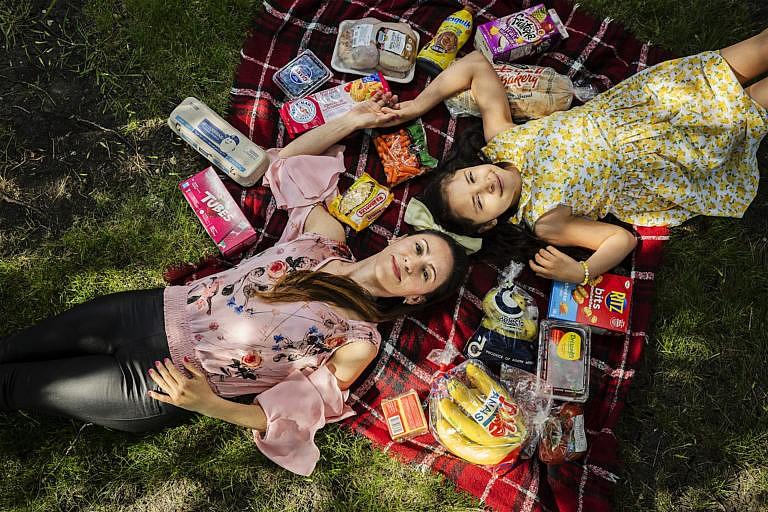The Food Diaries: Winnipeg
“Making calculations on our Excel sheet to see what food we can buy is like a part-time job”

(Photo by Aaron Vincent Elkaim)
Share
With the rising costs of nearly everything, Canadians are particularly feeling the pinch when it comes to rising food costs across the country, further fuelling a food insecurity crisis being experienced by many throughout the nation. Here, Tharim Maryoly Sanchez Quiroz, a business student in Winnipeg, Manitobam shares her story:
In January, I moved from Colombia to Canada with my nine-year-old daughter, Allegra, so I could study business at the University of Manitoba. A few weeks after I arrived, I lost $4,300 in a fraud scam to someone pretending to be from Service Canada. A huge chunk of my savings were gone.
I was already stretched before that: I’m a student for eight hours a day and a mother for the rest. I work on my assignments, take my daughter to school, prepare meals and do housework. Sometimes I struggle to get more than four hours of sleep. I have a remote part-time job, and I’d like to find a position in Canada that allows me to work from home for three hours a day. Balancing it all isn’t easy.
Groceries are so expensive here. For example, a papaya in Colombia costs the equivalent of $2. Here, it’s three times as much. When I compare the difference in meat prices between Colombia and here, I just take a deep breath and tell myself, “It’s okay, I’ll find a way.”
To save money for food, I moved into a friend’s two-bedroom apartment, and we split the $1,288 rent. That helps a lot, but I still have to be strategic with groceries so that my daughter can have a healthy diet. I started an Excel sheet to track our food budget. We can only spend an average of $360 from my savings, though sometimes it goes up to $400. Making calculations to see what we can buy is like an extra job.
One week, I went to Giant Tiger and picked up bananas, spaghetti and rice. I wanted apples for my daughter’s snacks. A few months ago, a bag of them went for $4.90, but this time it was almost $7, so I just bought two individual apples. Spinach was expensive so I bought lettuce instead—I always buy one of the two, but never both. I left the avocados and grapes on the shelf because they were too pricey. A few days later, I went to Safeway because there was a sale on chicken. I bought enough for a few weeks and stocked the freezer. I told my daughter that our meat would just be chicken for a while. Beef is too expensive. On the weekend, I went to Walmart to buy bread. It’s tradition back home to go to a nice bakery and buy four or five croissants for a dollar. We don’t do that here because they cost a dollar apiece, so instead we got tortillas and sandwich bread.
We go to two local food banks: the University of Manitoba Food Bank every three weeks, and Harvest Manitoba community food centre once a month. They give us some items to supplement our weekly groceries, like oranges, lemons, bananas, canned foods and peanut butter, and that helps our budget. We are eating enough—it’s not like we’re going hungry—but we are constantly thinking about how we can have balanced meals.
Allegra is understanding about the fact that we have to change our buying habits. Sometimes she will ask for a croissant or ice cream, and maybe once a month I will splurge for her and get her a treat. Back home, we liked to go out to eat once or twice a month. Here, we can’t afford that, but I’ll still take her to McDonald’s for a Happy Meal, and pack a peanut butter and jelly sandwich for myself. If groceries were cheaper, I’d order with her. I’d get a nice, big hamburger. — As told to Andrea Yu
This story is part of a series on food insecurity in Canada funded by the Maple Leaf Centre for Food Security, in partnership with Community Food Centres Canada.